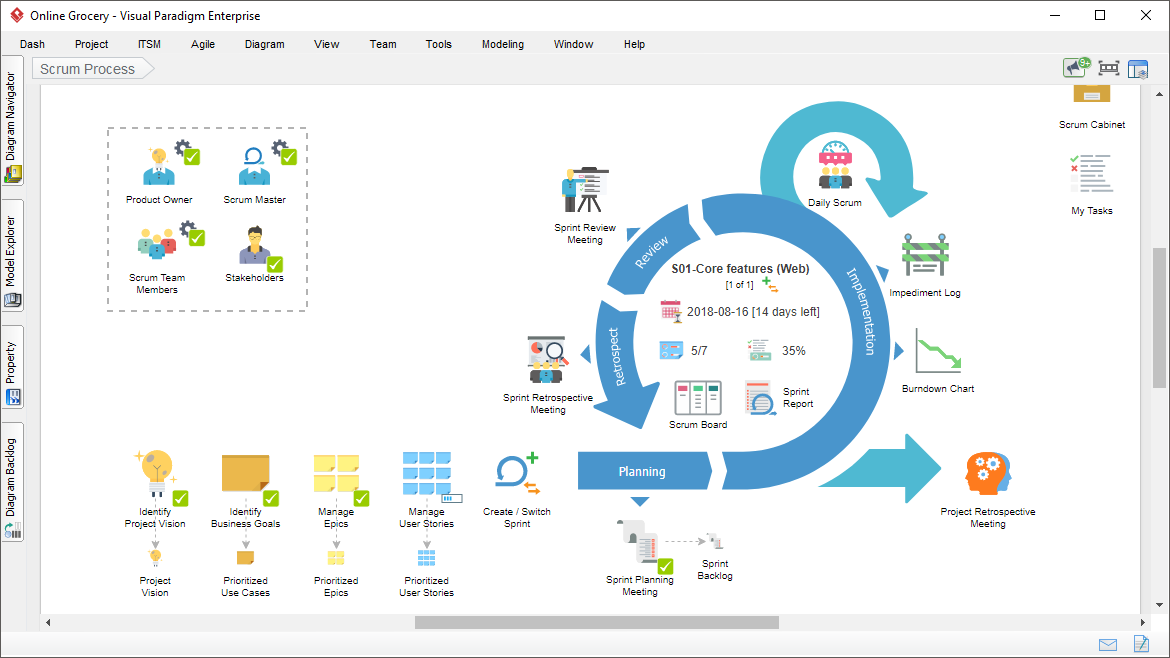
Agile is an iterative approach to software product development. It helps project teams deliver value to their customers faster and better. One of the key agile principles is to deliver work in small, testable and manageable scale. Instead of upfront requirements identification, agile emphasize the continuous discovery and identification of requirements throughout a project. Agile teams can react to change faster and easier.
This is a step-by-step agile scrum tutorial that helps you understand the core concept of agile development as well as the way how agile project can be executed from the beginning until the end (i.e. product delivery). The agile software Scrum Process Canvas will be used throughout this tutorial. The whole agile scrum tutorial will cover various agile topics and it is recommended that readers read this scrum tutorial in order in order to fully understand the flow of agile project development.
This agile tutorial has been written for both the people below.
There are totally twenty lessons covered in this agile tutorial. Click on a lecture to begin.
| Lesson No. | Title | What You’ll Learn |
|---|---|---|
| Lesson 01 | How to Identify Project Vision |
|
| Lesson 02 | How to Appoint Product Owner |
|
| Lesson 03 | How to Appoint Scrum Master |
|
| Lesson 04 | How to Form a Scrum Team |
|
| Lesson 05 | How to Identify Scrum Project Stakeholders |
|
| Lesson 06 | How to Identify Business Goals |
|
| Lesson 07 | How to Manage Epics |
|
| Lesson 08 | How to Manage Product Backlog |
|
| Lesson 09 | How to Develop Release Plan |
|
| Lesson 10 | How to Create a Sprint |
|
| Lesson 11 | How to Conduct a Sprint Planning Meeting |
|
| Lesson 12 | How to Record Impediment |
|
| Lesson 13 | How to Create a Burndown Chart |
|
| Lesson 14 | How to Create a Scrum Board |
|
| Lesson 15 | How to Conduct Daily Scrum |
|
| Lesson 16 | How to Conduct Sprint Review |
|
| Lesson 17 | How to Conduct Sprint Retrospective |
|
| Lesson 18 | How to Conduct Project Retrospective |
|
| Lesson 19 | How to Generate Report for Scrum Project |
|
| Lesson 20 | How to Use Artifact Shortcut |
|